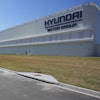As power interruption becomes less tolerable to manufacturers, the option of generating efficient back-up power at the point of use begins to make sense. The benefits are many.
Industry's electric-power needs are not as simple as they once were. In today's manufacturing and processing plants, where systems are almost completely operated by computers, plant managers face more complex concerns regarding the power that fuels their facilities. Issues of power quality and reliability can now have serious impact on a company's bottom line, as deviations in utility power, voltage, harmonics or outages can completely derail a production sequence. The bad news is that while power needs are increasing, the quality of the power we receive is decreasing. The good news is there is an easy-to-implement, practical and economical way of overcoming this imbalance in the form of on-site generation.
On-site generation does not mean unplugging from the grid. Utilities, in fact, do a tremendous job providing communities and businesses with nearly around-the-clock power – power that is recognized as being available 99.99% of the time. Unfortunately, that percentage still means power will be unavailable .01% of the time, or about 52 minutes per year. For operations with stringent performance requirements, this amount of downtime can be devastating. An on-site generation system installed to augment utility-generated power can reduce that 52 minutes to 30 seconds of downtime per year. That means production can run 99.9999% of the time plant management needs it to, providing "six 9s" of reliability.
Delivering uninterruptible power
Industry has long been aware of the importance of uninterruptible power sources (UPS). Plant managers are finding, however, that the lifecycle cost and upkeep of these devices – typically, diesel-engine-powered generators – is high, based on the amount of service they provide. These systems are essentially insurance policies that never work except during a loss of power. Those who implement them have a fairly large capital outlay with no return on investment gained from reduced operating costs. In practice, that means the back-up power capabilities are bought and paid for, but almost never used. And when they are, it's typically for bare-bones needs, not for sustaining normal production.By contrast, on-site generation offers the same level of power guarantee as the traditional UPS, but provides additional value to manufacturing companies in the form of protection from long-term outage. On-site generation goes beyond a standard UPS system by also reducing the cost of electricity, providing higher efficiency and reducing emissions when compared to utility power. At the same time, generating power on-site and using long-term gas contracts can provide a hedge against electric price volatility by decreasing dependency on the utility and its price fluctuations.
What is on-site generation and how does it work? On-site generation is a process by which a facility, rather than purchasing its power from an electric utility, will produce its own electricity at the point where the power is used. A typical on-site system consists of an engine (generally a reciprocating engine), which drives a generator to produce electricity. In most systems, auxiliary equipment is used to recover or reject the heat produced by the engine. That heat can then be used to heat or cool a building or to supply process heat for manufacturing operations.
While diesel has been the fuel of choice for equipment used to provide uninterruptible power, new applications fueled by natural gas are becoming more common. Gas microturbines are finding greater acceptance due to the fact that, in addition to providing extended run time and higher performance, the increased heat of combustion offers a cleaner burn. Hydrogen generators, fueled by natural gas, also offer a cleaner alternative by producing hydrogen that can be combined with oxygen by a fuel cell to generate electricity and water. Fuel-cell technology is showing a great deal of promise for future applications.
Renewable sources of energy such as wind and solar (photovoltaic) power are also gaining in use. The knowledge that has been gained from various general-use installations is now being adapted for use with specific, on-site systems. Though the use of renewable sources of energy for on-site generation is not prolific in today's industrial and commercial applications, municipal and state legislators are beginning to offer incentives to businesses to reduce greenhouse-gas emissions, especially in geographic areas where solar and wind conditions are optimal. Photovoltaic and wind-turbine technologies, when blended with on-demand generation from fossil fuels, can create dramatic environmental improvements while increasing power quality and reliability, and meeting economic objectives.
Is on-site generation for you?
To determine if on-site generation is appropriate for your operation, there are three needs to assess. If a facility requires one or more, it is a likely candidate. The needs are:• Essential need for power reliability. Because power failure is generally not seen as a direct cost to a manufacturing plant, it's often difficult for finance executives within a company to articulate the cost of a power outage. But there are many tangible costs that can and should be calculated: idle workers, reduced production, lost product and, perhaps most importantly, lost customer confidence. Even a brief disruption can shut down an entire day's output. Companies that can financially quantify the value of increased power reliability are the most likely to see the benefits of diminished, if not eliminated, downtime.
• On-site need for heat. In plants that require heat for processes such as pasteurization or sterilization, combined heat and power (CHP) systems can be used effectively. CHP, also known as cogeneration, can be a natural extension of on-site generation. In most cases, it improves the economic benefit of the project by as much as 25% by using the heat produced by on-site power generation. Less-critical uses for such heat include space heating and domestic hot water.
• Need to reduce electricity costs. If you have low gas prices and high electricity prices, on-site makes the most economic sense to implement on a cost-per-kilowatt-hour basis. Even in today's relatively low-priced power markets, the economics of on-site are increasingly winning the day.
Another factor to consider is the desire for increased efficiency. A plant using a cogeneration power system, for example, can reach an 80% efficiency level in terms of fuel consumption versus the traditional utility use of fuel, which is closer to 25%. This also has an environmental benefit, in that the total overall greenhouse gas emissions of the plant will be reduced. There are several states that offer incentives to companies to implement more efficient power systems. In California, for example, such incentives can reduce a project's upfront cost by as much as 30%.
If return on investment isn't a good-enough reason to consider on-site cogeneration, the move may be motivated by safety concerns. For example, in facilities that use exothermic processing such as smelting, roasting and chemical processing, the danger of fire from as little as a 20-cycle dropout demands that power be absolutely continuous. In this case, a CHP system might consist of a 95kW propane-fueled generator, providing 208v 3-phase power to a critical load panel, which is also served by the utility. The generator would operate full time during production. In the event of an outage or anomaly as short as two cycles, the utility-side circuit breaker would open and the critical electrical load would be seamlessly sustained by the generator.
Until now, most companies have viewed the power that supplies their operations as separate, assuming that consistent power was a given. But to compete in today's digitally driven marketplace, companies must revise that thinking. The new energy paradigm is that power generation is integral to mission-critical processes and instrumental in helping companies achieve strategic objectives. On-site generation, while not a panacea for every energy need, offers benefits over other power options, including reduced operating expenses, minimized risk and reduced pollution. The rapid payback of capital investment in on-site generation opens cogeneration technology to a wide swath of industry, including mid-sized operations. Because these systems can be used as a regular part of production, they generate not just power, but a regular return on investment as well.
Jito Coleman is president and CEO of Northern Power Systems, Waitsfield, VT. The company specializes in providing power-generation systems for industrial applications, especially in harsh environments. With more than 25 years experience in the field of distributed energy, Coleman has designed wind turbines from 1kW to 250kW, and hundreds of renewable systems worldwide. During his eight-year tenure as president, Northern Power Systems has tripled its number of employees and increased revenue by 400% since 2000. In April 2002, Coleman was chosen as Vermont's Small Business Person of the Year by the U.S. Small Business Administration.


















